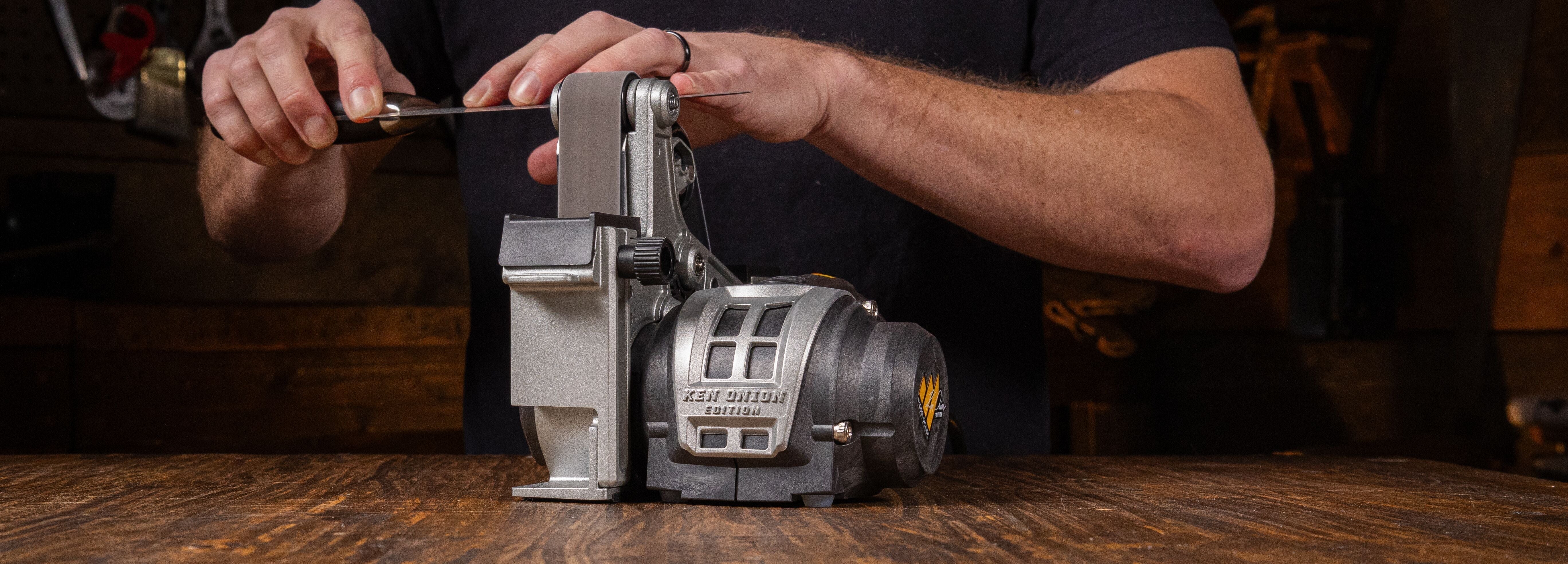It is always exciting when you get a new knife and start using it for all kinds of various tasks, but the day will eventually come when that knife needs to be sharpened back to its former glory! When that day comes, you will want to know a few things about the knife before getting started.
First, determine what angle the knife was sharpened to from the factory. Generally, most pocketknives and outdoor knives are sharpened somewhere between 20°-25° and kitchen knives 15°-20°. Large bush crafter or camp knife can be as wide as 30°. You can always check with the manufacturer of your knife to see if that information is provided. If not, the Precision Adjust Knife sharpener can help. By setting up a knife on the Precision Adjust as if it were going to be sharpened, the angle can be determined by laying the abrasive plate on the knife and turning the angle adjustment knob to move up or down until the abrasive plate is in alignment with the bevel of the knife.
Once the factory angle has been determined, you can then decide if you want to keep the knife at that angle or make an adjustment. Wider edge angles like those found on a pocketknife will hold up longer to use but will not slice as smoothly as a knife sharpened at a narrow angle like the edge found on a kitchen knife. Best practice is to decide how you plan to use the knife most often and sharpen for that task.
Another consideration is, how refined do you want to make the edge? A coarse abrasive like the 320-grit diamond plate on the Precision Adjust Tri-brasive, will leave a "toothy" edge when sharpened. Instead of progressing down to the 600 grit (medium abrasive), skip to the fine ceramic in order to remove the burr and leave the striations that will help create a saw-like edge for harder cutting tasks. If you prefer a smooth mirror like finish, progress through the abrasive options (coarse-fine) and refine the edge to your liking.
Whatever angle and edge you decide on, Work Sharp has the tools to help get the job done.






